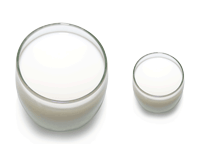New USDA analysis shows that farmers are receiving less of each retail dollar spent. Numbers in 2008 showed a 20 percent share, but new data cuts that number to 12 percent of the food dollar going to those that actually grow or produce the food consumers purchase at food stores.

What is causing the decline? Labor is the largest contributor to food prices. It takes several people in various channels to take the raw product and get it to the store shelf. Those people all earn a wage for their role; and wages do not seem to be declining. The second-largest contributor is the combination of food processing, packaging, and transportation. These three components all require energy and a lot of it! The ever-changing cost of energy is a key factor in the recent plunge of producer price percentages. While the producer receives 12 percent, these energy consumers are 33 percent of the retail dollar – nearly three times as much. If you choose to eat meals away from home, the added cost to eat at a restaurant goes to the business, shrinking the farmer portion to just 3.4 percent. So, energy costs are definitely contributing to the downward pressure on producer portions.
The National Farmers Union's February 2011 summary comparing consumer prices and producer prices, utilizes USDA's NASS Agricultural Prices 2011 as its source. The retail price was based on Safeway brand (Safeway is a supermarket chain with over 1,700 stores in North America). It lists a gallon of milk at $4.39 and the producer share at $1.50 per gallon. That equates to about $18 per hundredweight and 34 percent of the food dollar. So, as milk producers, we fair better than the average agricultural product (based on Safeway data).
Cheese is not as high. A retail price of $4.69 per pound and producer price of $1.12, makes a 23 percent producer share. Last year, cheese returned 55 percent of the retail price to producers.
Those industries that do not fair as well . . .
Farmers whose end product is beer receive only 1.5 percent of the consumer's retail dollar. Potato growers for raw potatoes receive 9 percent of the food dollar. But if potato farmers sell for potato chips, the farm portion drops in half to 4.5 percent. Click here to see the National Farmer's Union flyer with 15 agricultural products and their comparative costs.
The remaining portion of the food dollar includes costs for marketing, processing, wholesaling, distribution, and retail channels to get our product to consumers. But, again, don't forget labor – it's the largest share.

What is causing the decline? Labor is the largest contributor to food prices. It takes several people in various channels to take the raw product and get it to the store shelf. Those people all earn a wage for their role; and wages do not seem to be declining. The second-largest contributor is the combination of food processing, packaging, and transportation. These three components all require energy and a lot of it! The ever-changing cost of energy is a key factor in the recent plunge of producer price percentages. While the producer receives 12 percent, these energy consumers are 33 percent of the retail dollar – nearly three times as much. If you choose to eat meals away from home, the added cost to eat at a restaurant goes to the business, shrinking the farmer portion to just 3.4 percent. So, energy costs are definitely contributing to the downward pressure on producer portions.
The National Farmers Union's February 2011 summary comparing consumer prices and producer prices, utilizes USDA's NASS Agricultural Prices 2011 as its source. The retail price was based on Safeway brand (Safeway is a supermarket chain with over 1,700 stores in North America). It lists a gallon of milk at $4.39 and the producer share at $1.50 per gallon. That equates to about $18 per hundredweight and 34 percent of the food dollar. So, as milk producers, we fair better than the average agricultural product (based on Safeway data).
Cheese is not as high. A retail price of $4.69 per pound and producer price of $1.12, makes a 23 percent producer share. Last year, cheese returned 55 percent of the retail price to producers.
Those industries that do not fair as well . . .
Farmers whose end product is beer receive only 1.5 percent of the consumer's retail dollar. Potato growers for raw potatoes receive 9 percent of the food dollar. But if potato farmers sell for potato chips, the farm portion drops in half to 4.5 percent. Click here to see the National Farmer's Union flyer with 15 agricultural products and their comparative costs.
The remaining portion of the food dollar includes costs for marketing, processing, wholesaling, distribution, and retail channels to get our product to consumers. But, again, don't forget labor – it's the largest share.








